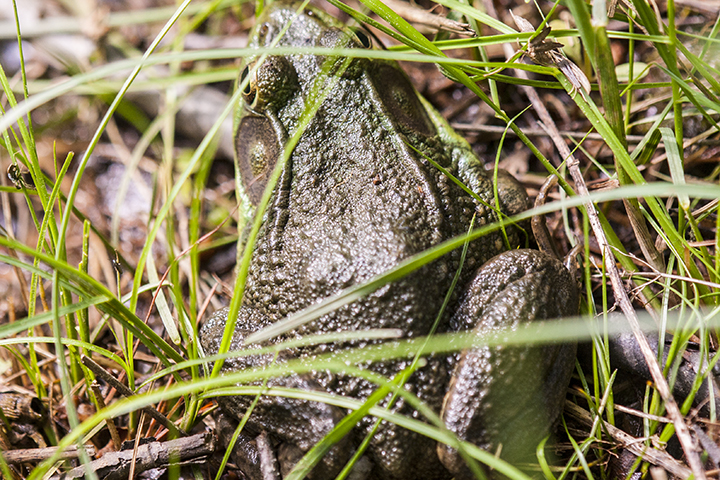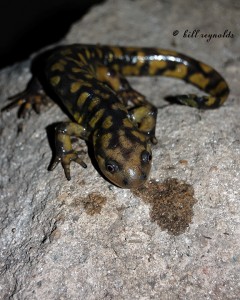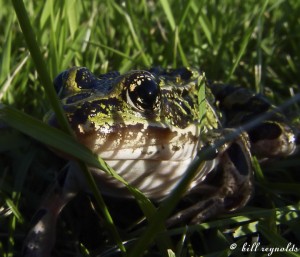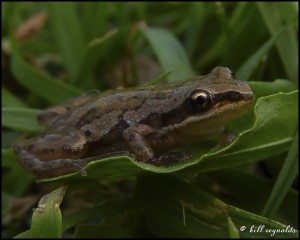Green frog (Rana clamitans) is a mid-sized true frog, the second largest frog in Minnesota after only the American bullfrog. It is common throughout the eastern United States, less common in Minnesota where it is at the western edge of its range. It is an aquatic frog, found in large marshes, streams, deep ponds, larger lakes, and roadside ditches.
Green frogs are often seen on a shore within one quick leap to a body of water. They hunt by sitting still and waiting for prey to cross their path. The mating call can be heard from May through July. It is usually described as the sound of plucking a loose banjo string, “plunk”. The call is a single note but is often repeated. No other frogs in Minnesota sound similar.
Green frog is distinguished by the large size; the prominent back ridges (dorsolateral folds); and the fourth toe on the hind foot, which is not webbed beyond the second joint.




